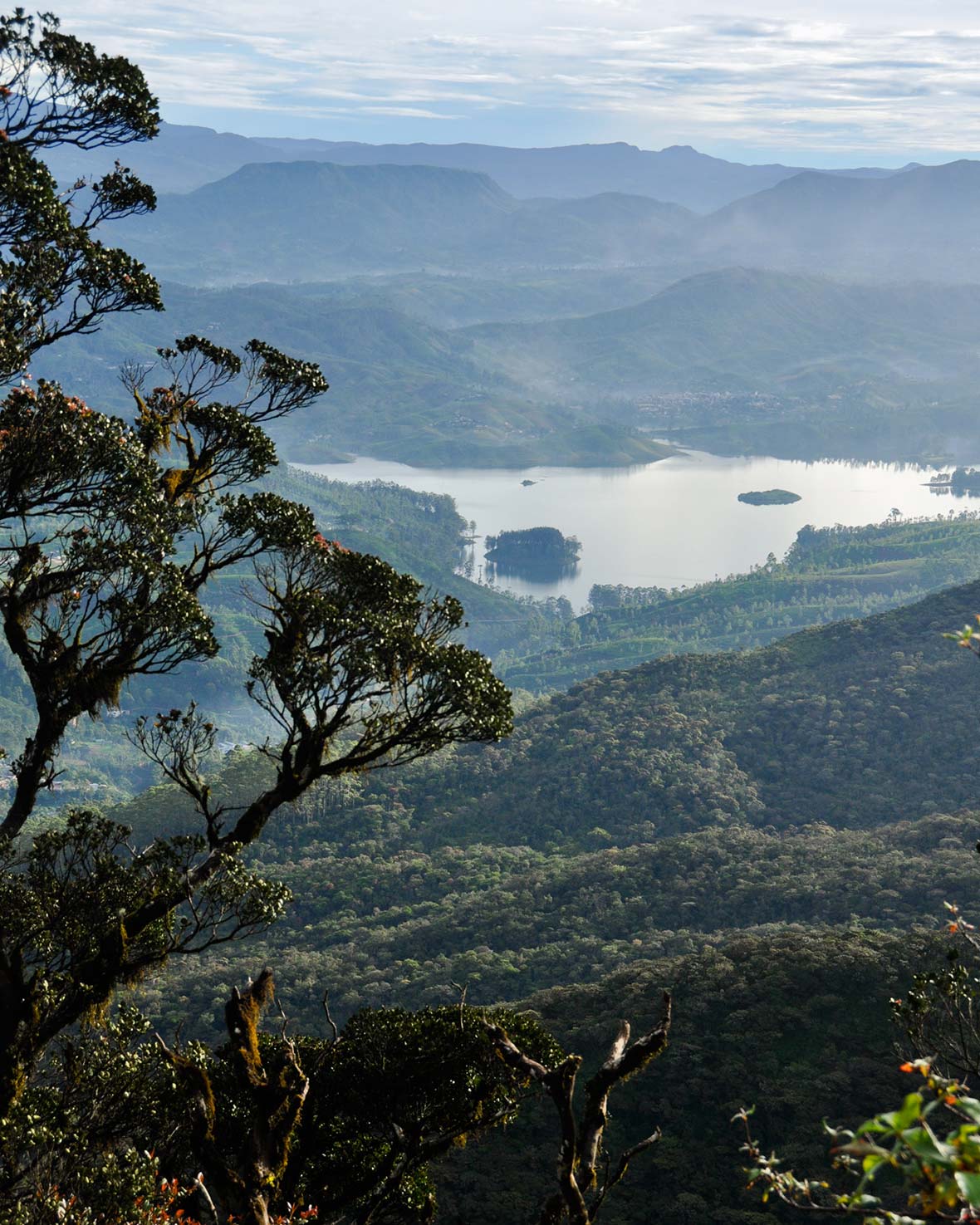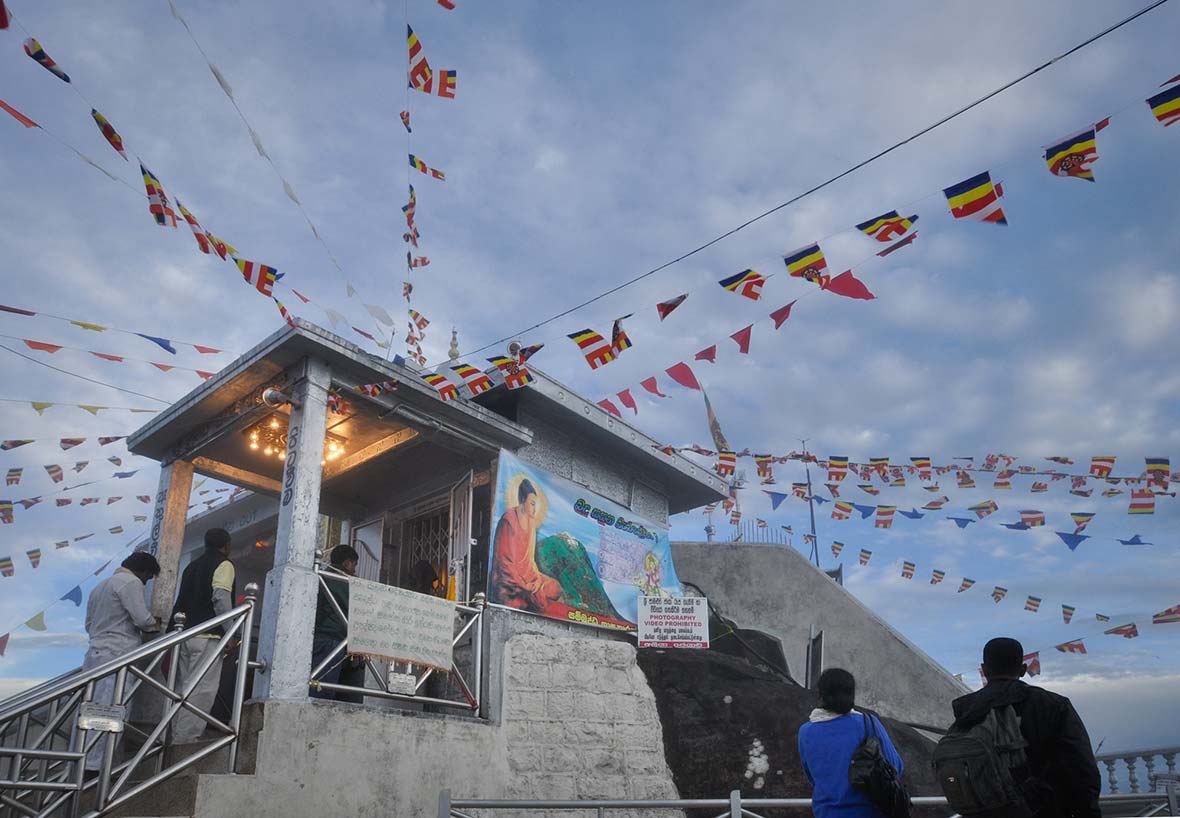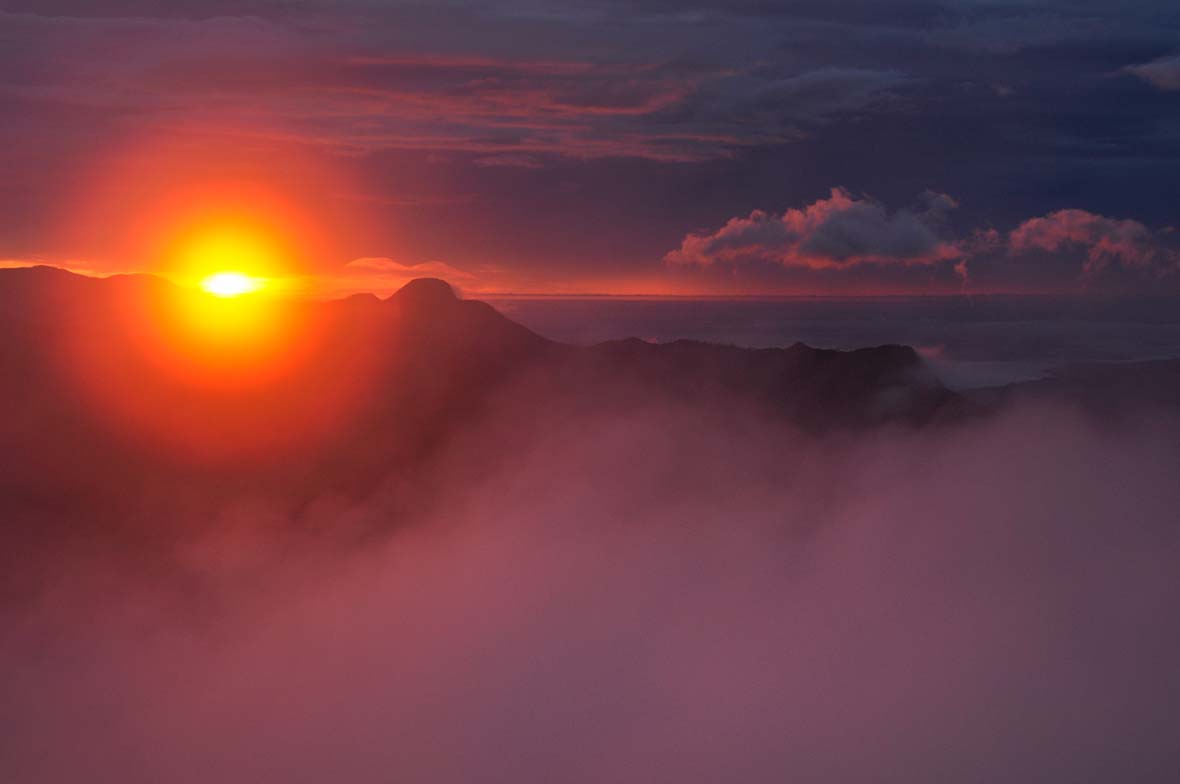
A snake of lights is crawling up a dark mountain slope, and we are floating along its sinuous length. Passing under the arched tips of its neon light vertebrae, we scratch the dark insides of its belly scales with spears made of torch light beams. Step after step, this reptile twists until its flickering body hits another curve in the path and then switches direction again, forever upwards in the night.

I’ve tackled quite a few mountains in my life: the brown, flat-headed giants embracing their knees atop China’s plains. The pointy fellows holding each other’s hands at the entrance of Eden in the Annapurna region of Nepal. More challenging mountains, yes — but haunted by less solemn spirits.
Here, all around me are pilgrims walking barefoot on gelid stone in the dark: the women’s bangles tickle against their tired ankles, while maroon swaths of monks pull their robes high over their left shoulders, trying to form a shield against the mountain’s bite of frost. No matter how we are all hellbent on ascending the peak they call “Adam’s”. But most importantly, this is Sri Pada. Home to the Buddha’s Sacred Footprint, and the main reason for the spiraling upward humanity I joined tonight.


At 2243 meters, Adam’s Peak is one of Sri Lanka’s highest mountains. It lies among the southern Central Highlands of the Ratnapura district in the Sabaragamuwa province, 150 kilometers east of the country’s capital, Colombo. The peak rises like a green fang from a carpet of a dense forest reserve where wild elephants and leopards abound. Besides flocks of clouds, the peak attracts thousands of pilgrims of different religions daily. The reason is its Sri Pada — a 1.8-meters long rock formation that juts from the summit and has a mixed bag of religious meanings.
Buddhists believe it is the Sacred Footprint of the Buddha, while Hindus think the foot was Shiva’s. To Christians and Muslims, it’s instead the sign of Adam’s passage on earth. Folklore says that the first person to discover the Footprint was King Valagambahu (104-76 BC): fleeing from marauding Cholian armies, he stumbled upon the footprint as he was running after a deity disguised as a stag. Marco Polo visited Adam’s Peak in the 14th century, reporting that the climb was extremely arduous in places.

Today, a stone staircase helps every Sri Lankan and foreign visitor tackle the peak much more easily. Many attempt the climb several times during their lifetime. From December to April, the mountain is in full pilgrimage swing every night. Some climb in the afternoon to reach the shrine at sundown, but the most popular and spiritual route is to ascend in the middle of the night, reaching the top in time to catch the crack of dawn as it slam-dunks a burning planet into a sea of misty grey clouds.
But first, getting to Adam’s Peak is an act of devotion. After snaking my way from Kandy to Hatton on a slow train through the grassy bends of unending Ceylonese tea estates, I caught the rickety bus to Dalhousie, the starting point of the 5 kilometers Nallathanni climbing route, which is the shortest way to the summit. A cluster of chai stalls, homestays, and restaurants where tablecloths are never de rigueur, Dalhousie rests at the foot of the Sacred Mountain and feels like it’s been custom-made to start the Sri Pada experience. The basic facilities on offer here are perfectly attuned to the reasons for the climb, which is not leisure, but a pilgrimage.

I’m out of bed and standing in the cold by 3 am, for dawn breaks at 6.30 am, and the climb can take between two and a half and four hours. Groups of pilgrims in white dothis and sarees lead me through the dark and to the beginning of the incline, one last ring of that snaking path’s rattle tail, almost two kilometers from the start of the climb.
“Each time feels like the first,” explains Saman, a slender man from a village near Bentota. He and his wife are here for the fifth climb, this time accompanied by their six-year-old son, who’s climbing for the first time. Before the path starts rising, a monk from a Japanese Buddhist temple nearby comes forward with an offer and a blessing and ties a white string around my waist. Now that I have the eye of one of Sri Pada’s benevolent Gods open on me, I proceed upwards as the incline slowly turns into a proper stone staircase. Sleepy mounds of heavy blankets sprout under neon lights at the sides of the path, their outstretched hands holding pans filled with soul-soothing chai over portable gas stoves. Even on a sacred mountain, a cup has the inflated price of tourism’s gold rush.

The peak itself comes into view a couple of hours later. Very few of the humans we cross are heading down: with still faces, mouths zipped closed like aluminum flies, they point their eyes on the trail ahead, shivering together in pitch black. The darkness starts dispersing in tones of blue as the path becomes one with the rock that makes the peak, and handlebars appear to help pull us upwards and finally onto the top.
Arriving is surreal: just before the light shatters the night as a hammer does with glass, we mount on the snake’s head and sail across the sea of shoes that surrounds the platform where the Sacred Shrine lies. Around it, a rotating circle of pilgrims walks in circles, reciting mantras and waiting for their turn to step on the shrine and pray before the Sacred Footprint. On the edge of the peak, young monks in woolen hats and frosty fingers hold their robes tight under their chins, waiting for the beauty of the sun’s first flame into a new day. With the sound of tolling bells at my back, I join the line and watch the horizon as thirsty clouds absorb shines of gold and blood red as they float over the goose bumps on central Sri Lanka’s mountainous back. Gulping in awe, my tired legs stop aching. The spectacle makes us all forget that we will all have to return to Earth.
